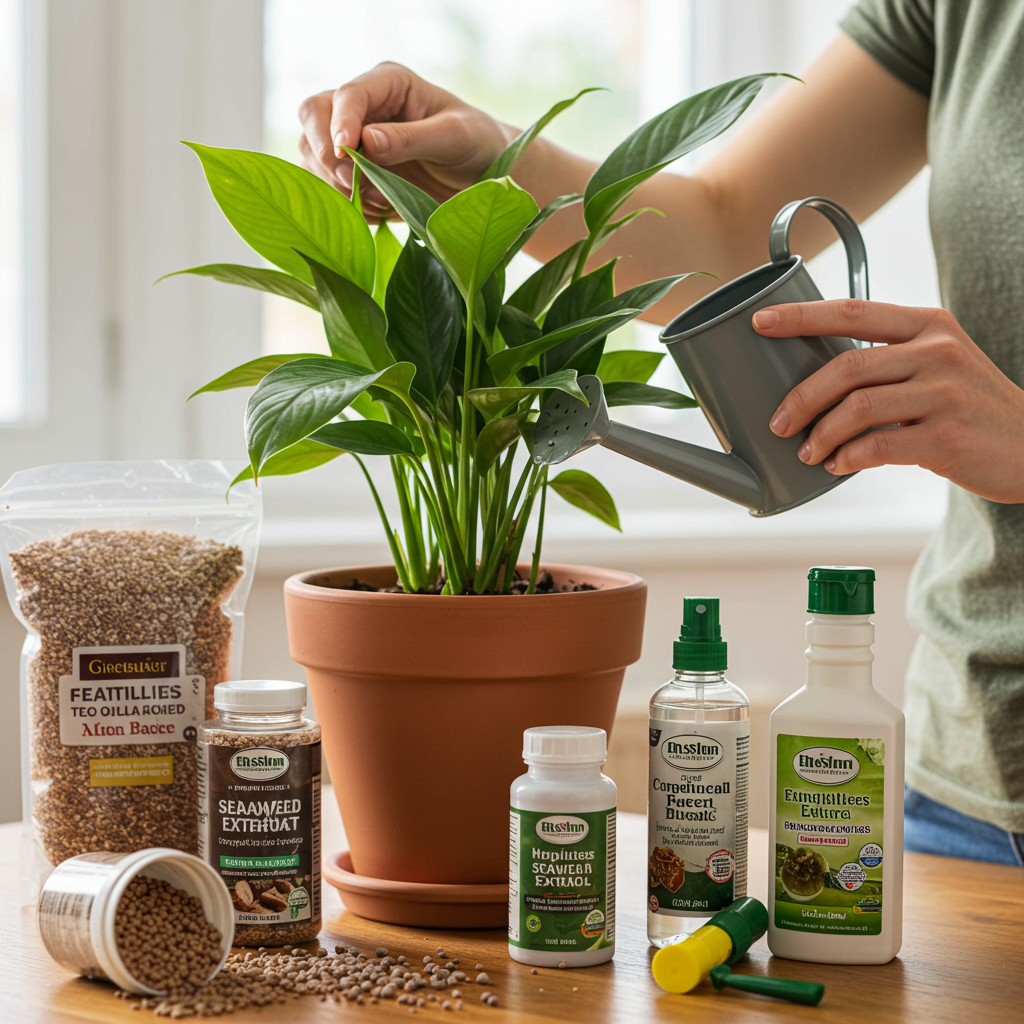
Nurturing your leafy companions indoors requires more than just sunlight and water. Just like us, plants need a balanced diet, and that’s where fertilizer comes in. This beginner’s guide will demystify the world of plant nutrition, helping you choose the right fertilizer and application techniques to keep your indoor jungle thriving.
Understanding the basics of plant nutrition is the first step. Plants primarily require three macronutrients: nitrogen (N) for leafy growth, phosphorus (P) for root development and blooming, and potassium (K) for overall plant health and disease resistance. These are often represented as an N-P-K ratio on fertilizer packaging. For instance, a 10-10-10 fertilizer contains equal parts of all three.
Choosing the right fertilizer depends on the type of plant you have. Flowering plants benefit from fertilizers higher in phosphorus, while foliage plants prefer more nitrogen. Slow-release fertilizers offer a convenient option, gradually feeding your plants over several months. Liquid fertilizers, on the other hand, provide a quick boost but require more frequent applications. Organic options, like compost tea and worm castings, enrich your soil with beneficial microbes and nutrients, promoting long-term plant health.
When should you fertilize? The growing season, typically spring and summer, is the ideal time to feed your plants. During this period, they actively grow and utilize nutrients more efficiently. Reduce or stop fertilizing during the dormant season (fall and winter) as their growth slows down. Over-fertilizing can lead to salt buildup in the soil, damaging the roots and hindering nutrient uptake. Always follow the instructions on the fertilizer packaging and err on the side of caution. It’s better to under-fertilize than to over-fertilize.
Proper application techniques are crucial for effective fertilization. For liquid fertilizers, dilute them according to the package directions and apply evenly to the soil, avoiding contact with the leaves. For slow-release fertilizers, sprinkle the granules evenly around the base of the plant and lightly incorporate them into the top layer of soil. Always water thoroughly after fertilizing to help distribute the nutrients and prevent root burn.
By understanding your plants’ needs and following these simple guidelines, you can ensure they receive the proper nourishment to flourish. Remember, a little fertilizer goes a long way in keeping your indoor oasis vibrant and healthy. Happy growing!



